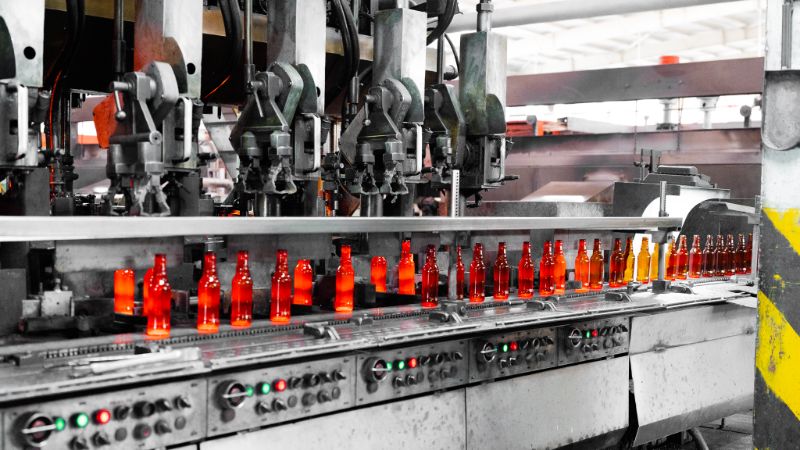Ecological concerns linked to the manufacture of glass
Ecological concerns linked to the manufacture of glass
1. atmospheric emissions
2. wastewater
3. solid waste
Air Emissions
Glass production relies on very high temperatures and substantial energy, generating combustion-related pollutants such as sulfur dioxide, carbon dioxide, and nitrogen monoxide, while also forming thermal NOx by oxidizing atmospheric nitrogen. Kiln exhaust contains particulate matter and can include trace metals. Emissions from melting furnaces account for about 80–90% of a glass plant’s total atmospheric releases, with additional emissions arising during the forming/molding and finishing stages across all glass manufacturing processes.

Wastewater
In glass manufacturing, most water is used for cooling and for washing waste glass. The main wastewater streams come from contact cooling systems, wash water, and stormwater runoff. To reduce losses, closed or sealed water treatment and recirculation systems should be employed. Overall, liquid effluent from glass plants is relatively small compared with many other industries and is largely confined to specific operations such as hot-melt quenching and water- or cold-shearing processes. Potential wastewater contaminants include glass solids, soluble glassmaking components like sodium sulfate, organic compounds from cutting lubricants, and chemicals used to treat water in cooling systems, including dissolved salts and other treatment agents.
Particulate Matter
In glass manufacturing, the dominant emission from process equipment is particulate matter. Every segment of the industry uses fine, granular, or dusty feedstocks and routinely stores and blends these materials. As these raw materials are moved, handled, stored, or mixed, dust is typically released.
Across our glass plants, we’re committed to reducing the ecological footprint of bottle production by implementing a broad set of initiatives, including:
- Whenever feasible, make cullet (post-consumer or process scrap glass) a primary raw material. - Divert spent refractory materials into brick manufacture; this method does not compromise brick quality.
- Renew refractory linings every 6–12 years, and recycle the removed materials during kiln or pre-kiln bed rebuilds and repairs — an approach that also reduces pollution.
- If color specifications allow, reincorporate captured dust back into the batch.
Our objective is to produce premium glass bottles with a smaller environmental footprint, contributing positively to the planet’s well-being.